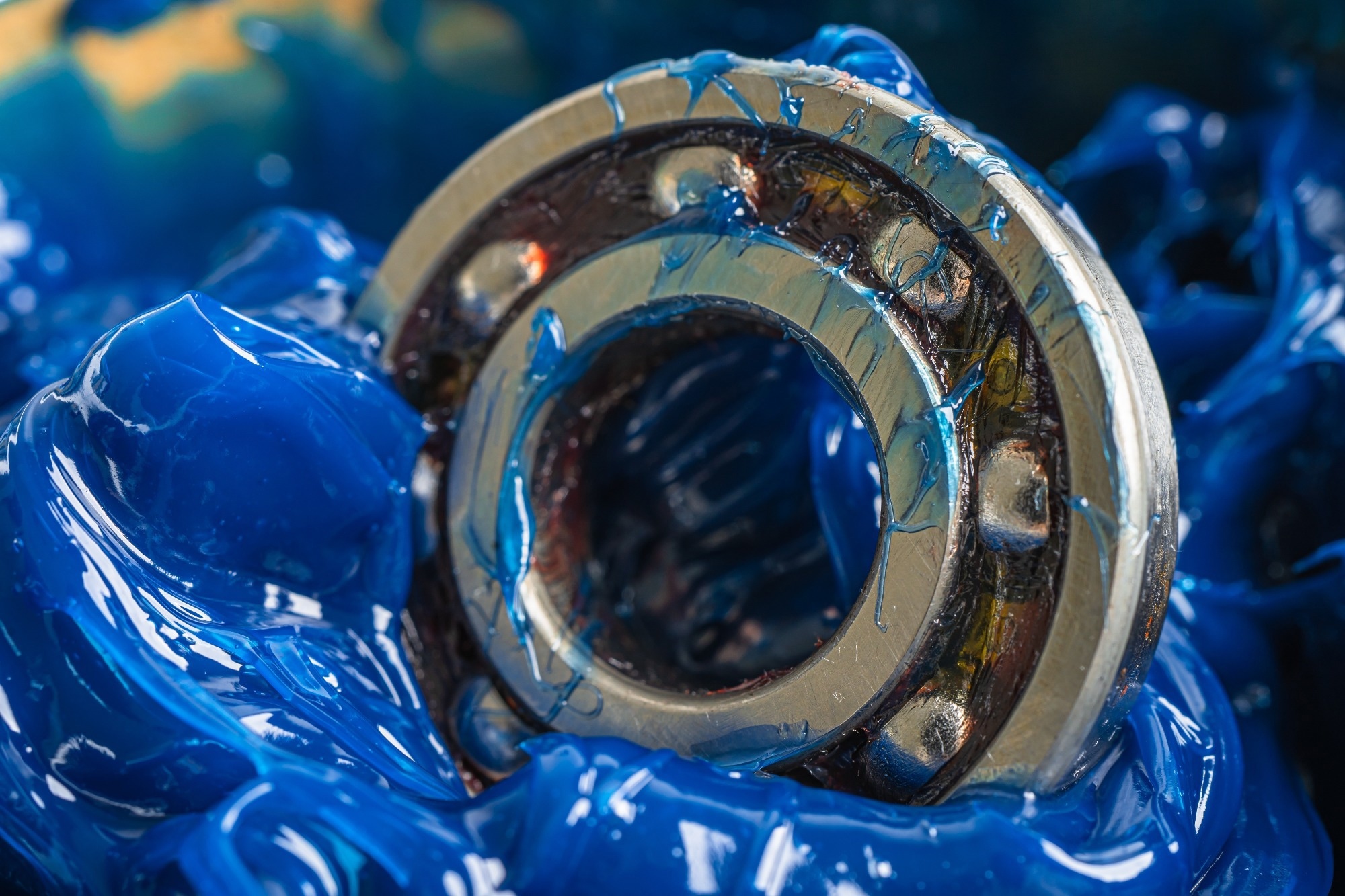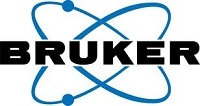AZoM interviews Damien Khoo, Staff Scientist at Bruker, to explore how electrified tribological testing is advancing EV lubricant research, addressing key challenges like electrical erosion, wear, and friction under real-world operating conditions
Watch the full webinar
What motivated the development of electrified tribological testing for EV lubricants?
The global population is expected to exceed 10 billion by 2050, pushing energy demand to more than 900 million terajoules. As a result, carbon dioxide emissions are likely to rise due to ongoing deforestation, fossil fuel use, and related practices.
We're already seeing the effects. Average global temperatures are increasing, and carbon dioxide levels are at worrying highs. In 2022, transportation was the second-largest source of CO2 emissions worldwide, making up about 21 percent of the total. Cars, trucks, planes, ships, and trains all contribute to the growing emissions problem.
Electric vehicles have been around for more than a century, but interest in them has surged in recent years. By 2030, EV sales are expected to exceed 40 million units annually. Still, building effective EV systems remains challenging. Engineers continue to face issues with material compatibility, copper corrosion, electronics, PCB design, direct current, thermal stability, and heat transfer.
Some of the toughest problems involve tribology - specifically, stray electrical currents in shafts and bearings. These challenges have created a need for new e-fluid formulations designed specifically for electrified systems. But these fluids also need to be tested in ways that simulate real-world conditions.
That’s where electrified tribological testing comes in. This approach examines how EV lubricants behave under electrical stress. For example, it measures electrical contact resistance under voltage to monitor tribofilm formation. It also looks at how electric current affects lubrication and the interaction between shafts and fluids during operation.
Right now, there are no standardized protocols for this kind of testing, and very few commercially available tribometers can accurately simulate electrified environments. To help close that gap, Bruker recently introduced the UMT TriboLab, a tool designed to meet these emerging testing needs.

Image Credit: sasirin pamai/Shutterstock.com
How does electrification affect the coefficient of friction in EV lubricants under DC conditions?
Applying DC current increases the coefficient of friction in EV lubricants by as much as 40 % under certain conditions. Using Bruker’s UMT TriboLab, we simulated vehicle-like conditions with sliding speeds of 5–8 m/s and monitored changes as current levels were increased from 0 to 0.5, 1.5, and 3.4 amperes.
At lower current, the coefficient of friction initially stays low, likely due to a thick lubrication film forming as the interface softens under current. However, after around 200 seconds, this film begins to break down, resulting in a spike in friction. The highest spikes were observed at 1.5 and 3.1 amperes, with the average coefficient stabilizing near 0.06 but showing high noise and sudden rises.
These results suggest that electrification alters film stability and lubrication mechanisms, shifting conditions toward boundary lubrication as the film degrades, leading to higher friction levels over time.
How does electrification impact wear behavior in EV lubricants under DC conditions?
Under DC conditions, wear in EV lubricants increases significantly due to electrical erosion and surface degradation. As DC current flows through the lubricated contact area, we observed larger wear scars, spark pits, and material removal under optical microscopy.
At 1.5 amperes, wear marks included scrap edges, pointing to three-body abrasion. These effects were more pronounced with higher loads (90–120 N) and elevated temperatures (up to 120 °C), where metal-to-metal contact became more likely.
The increased current appears to accelerate surface damage by disrupting the lubricant’s protective layer and promoting localized arcing or sparking during sliding. This leads to rougher wear patterns and higher material loss, highlighting the importance of fluid formulation and stability under electrified conditions.
What role does temperature play when testing lubricants under electrified conditions?
Temperature plays a critical role in how lubricants perform under electrified conditions, especially when electrical currents are present. As temperatures rise, wear becomes more severe, and surface damage, including scrap edges and pits, becomes more prominent.
To study this, we ran tests at a constant DC current of two amperes while heating the lubricant to 60 °C and then to 120 °C.
At 60 °C, the coefficient of friction remained relatively stable, and wear was only slightly worse compared to baseline tests without electrification. However, at 120 °C, we observed significant surface degradation. Scrap edges and deep pits formed, and the coefficient of friction spiked to around 1.56.
We also ran comparative tests where the temperature was held constant and the current was increased. The results suggest that while moderate temperature increases may not dramatically affect friction alone, high temperatures - especially when combined with electrical current - can lead to rapid film breakdown and aggressive wear.
How does AC electrification differ from DC in its impact on friction and wear?
AC electrification affects friction and wear differently than DC. While DC tends to increase the coefficient of friction and intensify wear, our tests showed that AC can actually lead to a decrease in the coefficient of friction over time.
We believe this difference stems from changes at the interface. Literature suggests that AC may promote charge-assisted absorption of additive ions and trigger redox reactions that form metal oxides on the surface. These oxides can reduce friction and may indicate milder boundary contact conditions compared to the metal-to-metal contact often seen with DC.
However, combining AC with elevated temperatures introduces more complexity. When heat is added, the coefficient of friction becomes highly variable, with noticeable fluctuations throughout the test. This suggests that the interaction between AC current and heat creates unstable or competing mechanisms, unlike the more predictable, upward trend in friction typically seen with DC.
Can this testing approach differentiate performance between different EV lubricants?
Yes, this method can effectively differentiate lubricant performance under electrified conditions. In our tests, some fluids exhibited significantly less scraping or pitting when exposed to the same current, load, and temperature settings.
For example, when comparing two commercially available fluids, we observed varying levels of sparking wear and pitting under identical AC current and thermal conditions. The coefficient of friction also followed different trends for each fluid, especially when heat was introduced alongside electrification.
To fully explain these differences, both physical and chemical analyses are needed. Factors such as ohmic heating, tribochemical reactions, three-body abrasion, or changes in material hardness under combined thermal and electrical stress may all play a role.
What did the load ramp test reveal about the load-carrying behavior of EV lubricants?
The load ramp test showed that as load increases, the coefficient of friction tends to stabilize, or even decrease, under DC electrification, suggesting potential threshold behavior in EV lubricant performance.
Using the UMT TriboLab, we conducted a single test at room temperature, gradually increasing the load from 20 to 120 newtons. The experiment compared two DC voltages: 0.5 V and 1.0 V. In both cases, the coefficient of friction showed a downward trend as the load increased, particularly under electrified conditions.
Without electrification, friction typically remained steady around 0.08. However, with DC current applied, we observed a noticeable reduction in friction as the load rose. While the exact mechanism is still unclear, this behavior may indicate enhanced load-carrying capacity under certain electrical and fluid conditions.
More extended testing is needed to confirm this trend and better understand the underlying cause. It could be specific to the fluid tested, but it opens an interesting direction for future investigation.
Why is the Stribeck curve still relevant under electrified lubrication conditions?
The Stribeck curve remains a valuable tool under electrified lubrication conditions because it helps visualize how lubrication regimes shift in response to voltage and temperature changes. It continues to provide insight into transitions between boundary, mixed, and hydrodynamic lubrication, even as electric currents alter fluid behavior.
In our testing, we applied DC current while varying temperatures and also ramped voltage from 1 to 3 volts at room temperature to observe how the lubrication regime responded. We found that electrification can extend the boundary region, particularly in lower-viscosity fluids, and promote a more stable hydrodynamic regime - likely due to enhanced film formation at high speeds, which reduces metal-to-metal contact.
This stability may delay the rise in the coefficient of friction under certain conditions. However, we also observed that beyond specific voltage or thermal thresholds, the coefficient begins to climb, suggesting equipment or fluid degradation.
These results highlight the continued relevance of the Stribeck curve, but they also suggest that existing film parameters may not fully capture behavior in the micro-elastohydrodynamic (micro-HL) regime under electrified conditions. Future models may need to account for electrical and thermal effects more explicitly.
How adaptable is the UMT TriboLab system for electrified tribological testing?
The UMT TriboLab’s modular architecture allows for highly versatile testing setups, supporting a wide range of drive types, environmental conditions, and integrated AC and DC power sources, all within a single platform.
In the tests described so far, we used rotary drive configurations to study friction and wear under electrified conditions. However, we’ve also conducted four-ball tests to assess grease performance.
In this setup, we used a test bench equipped with the UMT TriboLab, a four-ball tester, a load and friction sensor, and a torque sensor. Following ASTM D2266 guidelines, the test was run at 392 newtons, 75 °C, and 200 RPM for one hour using an off-the-shelf electric motor bearing disc and sufficient grease to fully coat the ball surfaces.
The flexibility of the UMT TriboLab extends beyond power integration. The system supports various drive modules, including linear, rotary, block-on-ring, and left-over ring drives, making it easy to simulate a wide range of real-world operating scenarios. Its environmental chambers are equally adaptable, enabling heating up to 300 °C, cooling down to –40 °C, and tests under controlled humidity conditions.
This modularity eliminates the need for multiple dedicated platforms, streamlining workflows and expanding test possibilities within a single system.
Additionally, while wear testing naturally creates surface scars, it’s often essential to measure the profile and underlying surface features. To support this, Bruker offers tribology starter kits and optical metrology tools, including non-contact profilers, ellipsometers, and photometers, which is ideal for analyzing surface topography and complementing tribological data.
Watch the full webinar
About the Speaker

Damien is a product development specialist with expertise in material science, tribology, and the circular economy. Over the past five years, he has developed advanced scientific instruments, including tribometers and benchtop CMP systems for industrial and R&D use. Working across product development and management, he collaborates with customers, commercial teams, and engineers to deliver practical, scalable solutions. His focus on performance, reliability, and sustainability supports innovation, product improvement, and compliance with evolving industry standards

This information has been sourced, reviewed and adapted from materials provided by Bruker Nano Surfaces and Metrology.
For more information on this source, please visit Bruker Nano Surfaces and Metrology.
Disclaimer: The views expressed here are those of the interviewee and do not necessarily represent the views of AZoM.com Limited (T/A) AZoNetwork, the owner and operator of this website. This disclaimer forms part of the Terms and Conditions of use of this website.